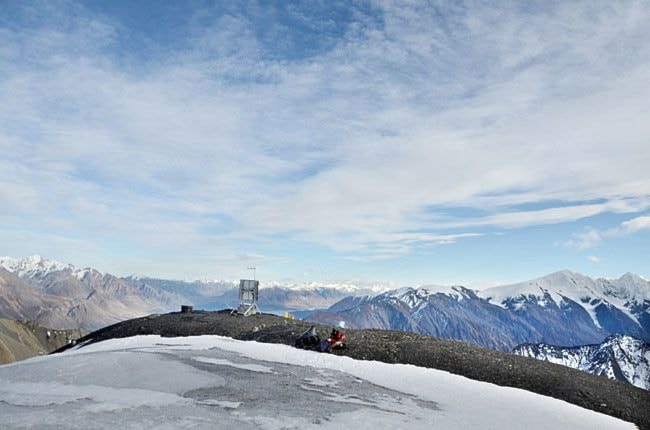By Claire Eamer
No, the Yukon Floater is not a rogue rafter. It’s the common name for the Yukon’s only freshwater mussel. And not much is known about it.
That’s why Syd Cannings of Environment Canada has issued a wanted poster for the little mollusk. He’s hoping that people will keep an eye out for mussel shells when they’re
fishing or trapping and help him get a clearer idea of where the mussels live.
The Yukon Floater isn’t flashy. Its shell is usually dark brown in older adults and lighter brown or olive green in young mussels. The interior of the shell, the mother-of-pearl part, is gun-metal blue. The shell is a little more rounded in shape than many mussels and grows as long as 15 centimetres.
Adult mussels live in the clear water of shallow lakes or slow-moving streams. They feed by filtering bacteria and bits of decaying organic matter out of the water.
Currently, the only recorded Yukon sightings of Anodonta beringiana, the scientific name for the Yukon Floater, are in Scottie Creek, near Beaver Creek, and in a lake on the upper reaches of the Eagle River. Cannings says the presence of mussels in the lake means they’re probably in other parts of the Porcupine River system too.
The Scottie Creek record is a bit puzzling. Yukon College anthropologist Norm Easton found shells on Scottie Creek and passed on information from local First Nations people about muskrats feasting on the mussels. Cannings says the presence of the mussels in Scottie Creek is odd because they are usually associated with salmon — and there haven’t been salmon in Scottie Creek for a long time.
However, a recent study in Alaska might shed a little light on the question. In the summer of 2004, researchers collected observations of freshwater mussels in Alaskan waters.
They received specimens from 54 locations, vastly increasing the known range of the mussel in Alaska. They also found evidence of several more fish species associated with the Yukon Floater.
Fish don’t hang out with the mussels on purpose. Adult mussels stay where they are for as long as they live — possibly decades — so the only time mussels can travel is when they are larvae, called glochidia. And they travel by hitching a ride on a fish.
Male and female mussels live packed together on the bottom of the lake or stream. To reproduce, the males simply release a cloud of sperm into the water and the females suck both water and sperm into their bodies, fertilizing their eggs. The eggs are incubated in special pockets in the female’s gills.
Once the eggs hatch, the glochidia are released into the water, where they try to latch onto a passing fish. The fish’s body reacts to the tiny larva by automatically covering it over with cells, forming a cyst. The baby mussel develops within the cyst for a few weeks, growing more and more like an adult mussel. Finally it breaks out of the cyst and drops to the
bottom of the lake, where it spends the rest of its life eating, growing, and reproducing.
The scientist who first identified the Yukon Floater in Alaskan waters, in the late 1950s, found its glochidia on three species of fish: king salmon, sockeye salmon, and three-spined stickleback. The 2004 survey found them on four more species of fish: nine-spined stickleback, slimy sculpin, Alaska blackfish, and Kokanee salmon.
So we now know that the Yukon Floater can hitch a ride on nine different fish species. But we still don’t know if the glochidia can transform into adult mussels on all of those fish.
Some kinds of mussels can mature only on a specific fish species.
In fact, there’s a lot to learn about the Yukon Floater, and good reason to learn it, Cannings says. As a group, freshwater mussels are the most endangered family of animals in North America.
“They’re hit by a double whammy,” says Cannings. Pollutants in water can kill them, and so can silt build-up from erosion and dams. Only the juveniles can travel to new and better habitat, but the conditions that threaten mussels also threaten the fish that provide their transportation. If a dam prevents fish from entering a river or lake, it also prevents the mussels from breeding and dispersing successfully.
And it doesn’t take much of a dam to eliminate freshwater mussels from a river system, Cannings says. “Even a little weir is enough.”
He hopes that his wanted poster will turn up new populations of the Yukon Floater and provide more information about how widespread they are and how they live.
For a copy of the poster, or for more information about the Yukon Floater, contact Syd Cannings at Environment Canada in Whitehorse, at syd.cannings[at]ec.gc.ca.
This column is co-ordinated by the Northern Research Institute at Yukon College with financial support from Environment Yukon and Yukon College. The articles are archived at www.taiga.net/yourYukon.
